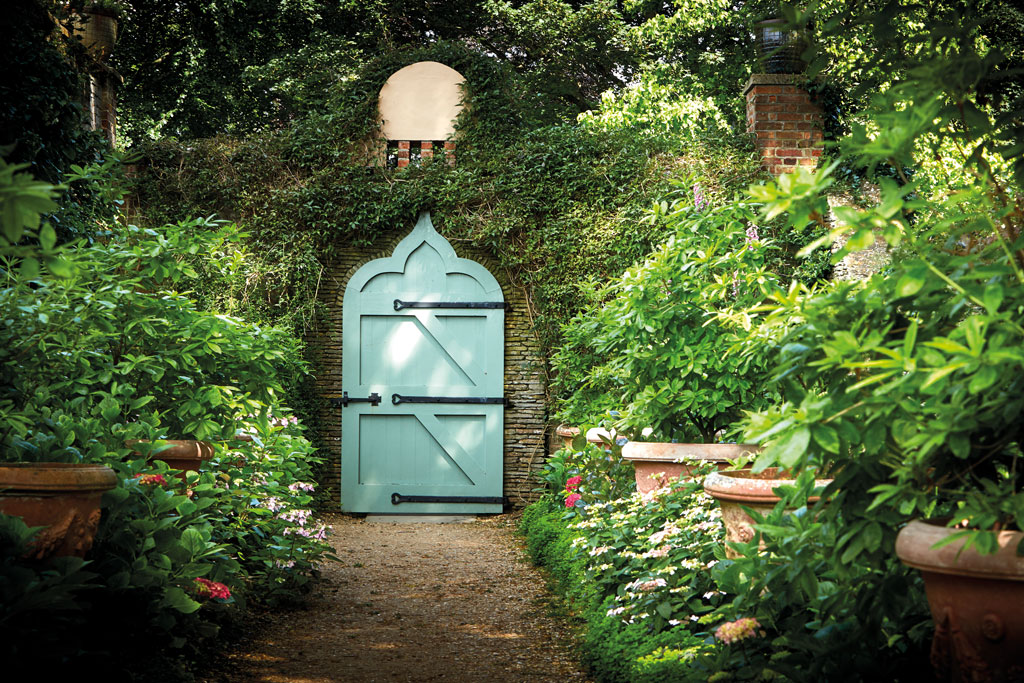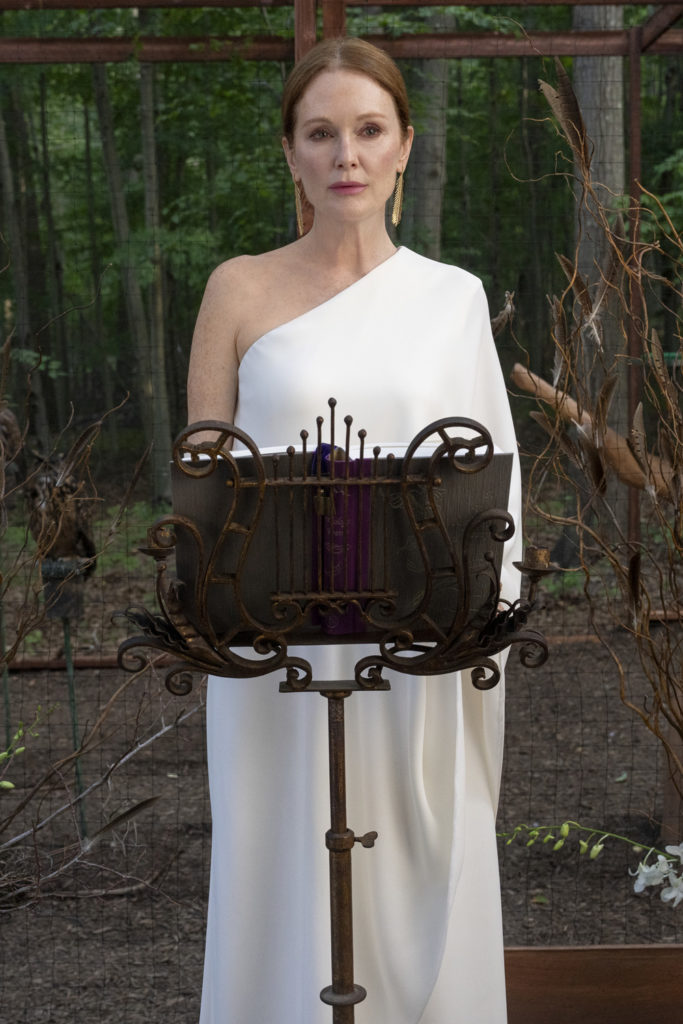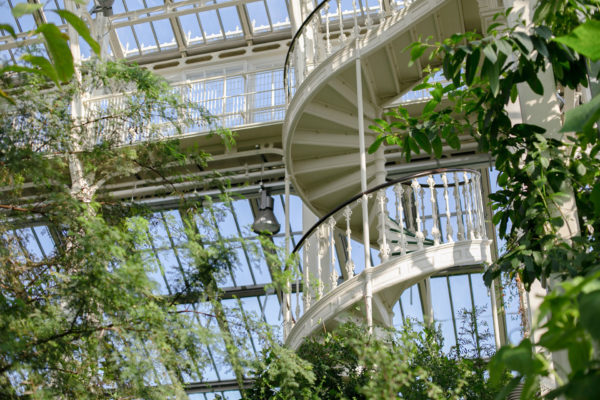Highgrove: A Visit To The Royal Gardens
By
3 years ago
Inside the family residence of King Charles III and Queen Camilla

Following the Coronation of King Charles III, we revisit Teresa Levonian Cole‘s visit to Highgrove, the King’s gardens, 25 years after they were first opened to the public…
Highgrove: A Visit To The Royal Gardens
Debs Goodenough breaks off in mid-sentence and drops to the ground. She has spotted something I cannot even see. ‘It’s a twayblade!’ she exclaims of the tiny greenish-yellow wild orchid. ‘I must show it to His Royal Highness – he will be delighted.’
It is 25 years since the organic gardens of the Prince of Wales at Highgrove opened to the public, raising over £7m for his charity, the Prince’s Trust. I am one of the 37,000 visitors who come each year, being given a guided tour around the 15-acre property by Goodenough, the charming head gardener, who has a soft Canadian lilt and an encyclopaedic knowledge of plants that is matched only by her enthusiasm for her job and deference to her employer. ‘What I always stress to visitors is that when the Duchy of Cornwall purchased this house [in 1980], there was virtually no garden. It was a blank canvas.’
It’s a good metaphor, given the Prince’s artistic predilections. He has covered this particular canvas in colour – not only in the choice of flowering plants, but in the gates and benches, beckoning in playful blues, pinks and yellows. In this detail, he was influenced by the vibrant palette of the Jardin Majorelle, restored by Yves Saint Laurent, in Marrakech. ‘He is always seeing new things and bringing items back from his travels, such as these wooden doors from India,’ says Goodenough. ‘It used to be called the Indian Gate, but was renamed the Shand Gate, in honour of the Duchess’ late brother.’ Next to it stand an elephant and her calf in box topiary – a gift from the Duchess of Cornwall.
I am struck by the cosiness and lack of pomp – the puckish humour, even. This is no Versailles (ironically, the kitchen garden, with its serried ranks of perfect vegetables in plots bordered by marigolds and crab apple trees, struck me as the most formal area). Rather, tended by a team of 11 gardeners, this is the horticultural equivalent of a high-maintenance woman who spends hours in front of the mirror to achieve that casual, just-out-of-bed look.
There is a theatrical sense of anticipation as you progress through a succession of secret gardens, as though through an enfilade of rooms, each one surrounded by walls of warm Cotswold stone or sculpted hedges. The aforementioned gates, each one unique, give access to a different world, that begins for visitors with the orchard. Here, along with heritage varieties of apple and pear, is a Glastonbury thorn, a gift from the Abbot of Glastonbury and a descendant of the original tree allegedly brought by Joseph of Arimathea. Grazing peacefully are sheep and deer made of woven willow by sculptor Emma Stothard, a beneficiary of the Prince’s Trust, who also presented him with a likeness of his beloved Jack Russell, Tigga.
We continue into the Cottage Garden, for which the Prince, as a novice gardener, sought the advice of Rosemary Verey. The hebe she planted is flowering, and all around is a riot of pink and blue, with martial delphiniums towering proudly to nine foot ten inches. A heady scent issues from plump, blush-tinged ‘Jude the Obscure’ roses – a leitmotif in the gardens – and also from a bed of carnations. Or, as I learn to call them, pinks. Even if they are yellow. These, however, are indeed pink – dianthus ‘Devon Wizard’ to be precise, and the Prince’s favourite, worn in his buttonhole.
I learn also that, in this predominantly alkaline environment, growing rhododendrons – which form the basis of the new Buttress Garden – is no mean feat. Acid soil has to be created for them, by composting the right components.
This is down to the wizardry of Goodenough: ‘His Royal Highness is the design element,’ she says. ‘My job is to get the horticulture right and do it in a sustainable, organic way.’ This applies equally to the kitchen garden, where ‘good horticultural practice helps keep pests away’. Apparently roses and garlic spray make good bedfellows.
The first thing the Prince sees on returning home, however, is the meadow of some 130 species of wildflower (including the wonderfully named ‘Farmer’s Nightmare’ seed mix). Conceived with the help of Dame Miriam Rothschild, an early proponent of organic gardening, it’s alive with birdsong and butterflies. ‘When I moved here, in 1980, I already felt passionately about the destruction that had been, and was still being, wreaked on our countryside since the 1960s,’ explains the Prince in his video introduction to the gardens. ‘Hedgerows were being ripped out, ancient woodlands lost, wildflower-rich meadows devastated and the excessive use of chemicals on both land and gardens was commonplace. At last, at Highgrove, I had an opportunity to work with Nature, rather than against her.’
Organic, sustainable, recyclable – everything is done in harmony with the soil and with the seasons, the principles environmentally friendly, down to water harvesting and special slow-release water bags, like whoopee cushions, to conserve water. Heritage varieties are propagated. Traditional skills, such as thatching and drystone walling, are championed. Even tree stumps, surrounded by ferns and hostas, reappear upturned to artistic effect in the famous Stumpery – a mysterious haunt where you might imagine dryads emerging at night. It put me in mind of The Castle of Otranto. This is where Hollyrood House – a thatched treehouse (with holly-shaped door), built for the seven-year-old Prince William – is to be found, along with the Wall of Gifts, where presents from students of stonemasonry find their resting place, in a kind of neo-gothic tribute. Gifts, in fact, are in evidence throughout the gardens – from the Indian bean tree in the Cottage Garden, given by Elton John, to the sundial offered by the Duke of Beaufort in the Sundial Garden – the latter originally designed by Lady Salisbury and surrounded by scalloped yew hedges that shield it from the wind and muffle street noise. I wonder what’s done with less welcome gifts. ‘The secret is to put the right piece in the right place, to be shown to best advantage,’ replies Goodenough, with unenlightening diplomacy.
The eclectic gardens reveal not only the Prince’s personal taste and passions, but also friends and important influences in his life. Familiar figures peer at you from hedges, pedestals and gateways – composer John Tavener, Miriam Rothschild and ‘Debo’ Devonshire perch atop the Egyptian gate; mentor Laurens van der Post resides like Saint Simeon on a pillar; poet Ted Hughes nestles in a wooden neoclassical tempietto – designed by Julian and Isabel Bannerman from green oak cut to look like stone, its pediment filled with Scottish driftwood. Eventually a roundabout route returns us to the Thyme Walk and the view of clipped golden yews leading from the Borghese Gladiator and the lily pond up towards the house itself – a beautiful but understated 1790s mansion. ‘All the experts advised His Royal Highness to remove the yews, which were part of the original garden,’ says Goodenough. But the Prince, ever his own man, decided to keep them, instructing his gardeners to create unique shapes from each one. Formerly neglected, these eccentric, living sculptures, architecturally regimented within stilt hedges of hornbeam and surrounded by a shaggy carpet of lavender, agapanthus and thyme, have become the iconic view of the estate.
Just visible from this angle is the spire of the oak pavilion, a memorial surrounding the stump of a felled 200-year-old cedar – one of the trees with which the Prince became enamoured on first seeing Highgrove. Nearby, new life is represented by a young balsam poplar, which the Prince of Wales planted with his grandson, Prince George, in 2015.
Birdsong, scented flowers, luscious fruits, colour and texture – Highgrove is a paean to the five senses, a Wagnerian gesamtkunstwerk. If it’s true that the Prince of Wales talks to his plants, it certainly seems to work. Just 40 years on from being a blank canvas, this much-loved garden looks as though it might have been here forever.
This article was first published in September 2019.

























